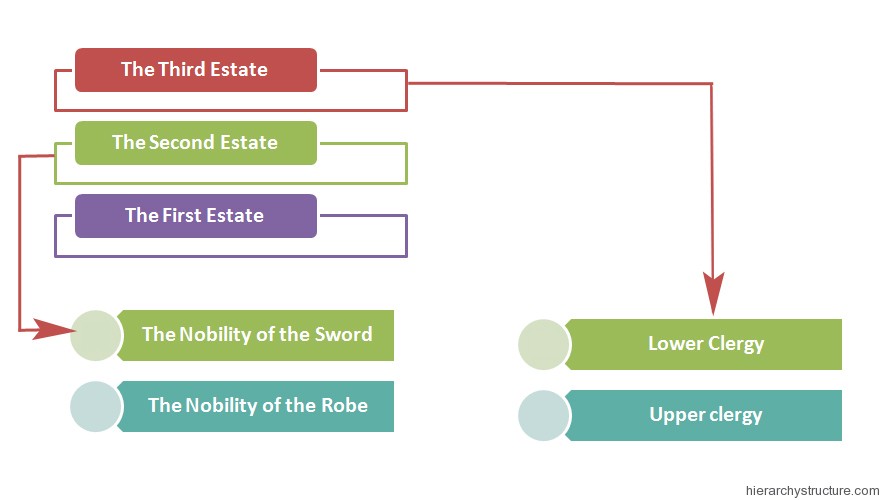French revolution is today seen as a major historic event. The French revolution had a profound effect on the economic, political and social upgradation in France. The revolution transformed the existing monarchical hierarchy of France into a rigid social hierarchy. The revolution significantly altered the French society. The period from 1789 to 1799 is called as the period of the French revolution. Let’s talk about the French revolution social hierarchy in more details with following levels:
- The Third Estate
- The Second Estate
- The First Estate
According to French Political historians, the cause of the French revolution was considered to be the weakness of the monarchy. The economic factors included malnutrition in certain segments of the population, due to the increased prices of consumable goods. The other factors included aspirations for social, political and economicequality. The French revolution started in the year 1789 with the convocation of the Estates-General.
During the French revolution, the feudalistic society was completely abolished. At that time, the social classes were divided into three groups called as estates. The first estate was of clergy, the second estate was of nobility and the third estate consisted of other classes and individuals such as peasants, merchants, lawyers, artisans and industrial workers etc.

The First Estate
The First estate was a privileged estate and was comprised of clergy. The clergy were associated with the French Catholic church, which maintained a diverse range of powers. The clergy were further divided into lower clergy and upper clergy.
Lower Clergy: The members of this class generally worked as village priests. Their responsibility included overlooking the working for temples, maintaining their neatness & taking care of its requirements.
Upper clergy: This particular class was filled by the abbots and bishops. They owned a significant percentage of land in France. The members of the upper clergy class were associated with different types of jobs. They operated various educational institutions and healthcare centres. In addition, they also provided relief to the poor at the time of need.
The Second Estate
The second estate was another privileged estate, represented by the Nobility. The individuals of this class held the highest position in the army, government and the churches. They collected timely rents from the peasants. They were involved in various respected professions like banking, insurance, finance and manufacturing etc. Two levels of nobility were prevalent in the French revolution social hierarchy such as the Nobility of the Sword and the Nobility of the Robe.
The Nobility of the Sword: This class carried more prestige. They served their King.
The Nobility of the Robe: They were also prestigious but lesser than that of the Nobility of the Sword.
The Third Estate
The third estate was at the bottom of the French revolution social hierarchy and consisted of the bourgeoisie, peasants and the artisans. The bourgeoisie class was relatively wealthy and was comprised of merchants, intellectuals, bankers, manufacturers, doctors, engineers and lawyers. The peasants were not financially strong and they rented landof the nobility for agriculture and other purposes.
